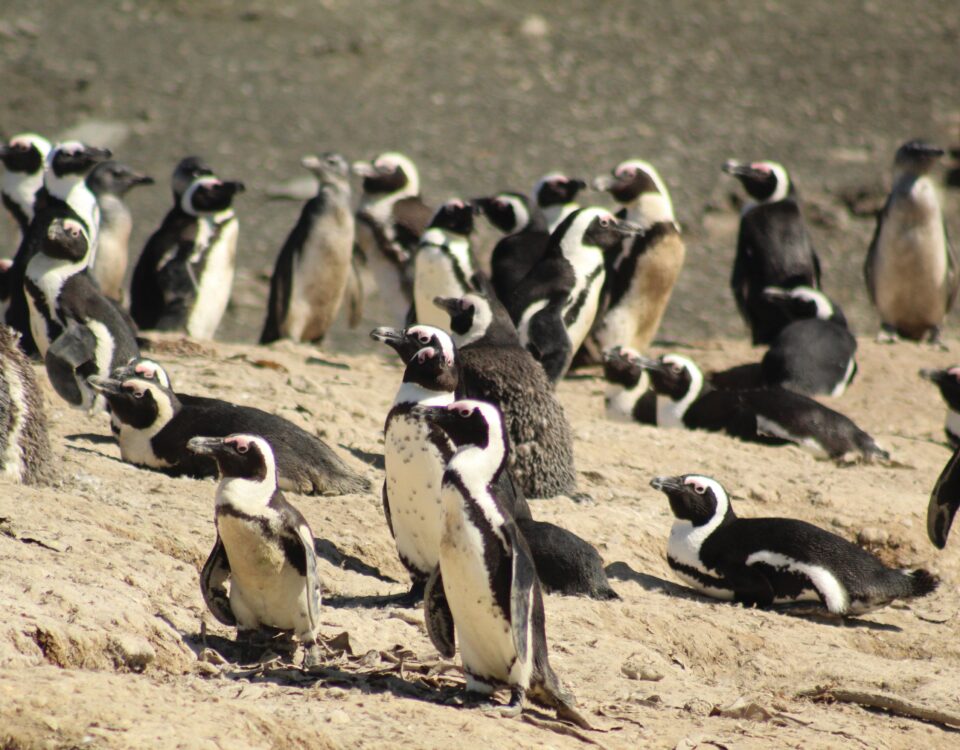National Botanical Research Institute: Conserving the diversity of Namibia’s plant life
July 6, 2012Dynamite in a small package – Patricia Skyer
July 6, 2012Senior guide, Orlando Haraseb, has been trained in all aspects of field guiding, and is currently undertaking the NATH courses. His previous training is paying dividends, and instructors frequently refer to Orlando as a well-trained and capable guide.
Orlando participates in all aspects of general lodge running and management and has been trained and continues to be involved in the following conservation aspects:
- Predator Trust: monitoring of lions and completing of Namibia Large Carnivore Atlas forms.
- Namibia Elephant & Giraffe Trust: ele-phant monitoring with satellite collars.
- Ongoing ringing of birds and training of staff.
- Collecting of botanical specimens for the herbarium, giving Orlando the opportunity to press, mount and document plants
In previous years the carnivore-monitoring programme initiated a leopard-monitoring programme on Hobatere Lodge. Hobatere staff contributed by monitoring the collared animals and documenting sightings on ATLAS forms. Nine leopards were collared during the study period and staff had the opportunity to assist during the capture and handling of the leopards once the cats were sedated. Staff learned what measurements were taken and how to fit radio collars for monitoring. Lions in the area were also collared. The monitoring of these and their offspring and any other lions entering from the Etosha National Park has become an ongoing practice. All data is documented on Carnivore Atlas forms and sent to Dr Flip Stander, previously of the MET, for co-ordination of annual reports on the animals.
The Hobatere concession holders are proud to have the oldest free-ranging lion on record in their area. This animal, marked as a juvenile near Gemsbokvlakte in Etosha almost 19 years ago, is five years older than the previously recorded oldest male lion. The old male on Hobatere fathered several offspring during his reign and is still wearing a defect radio collar which needs to be removed. Many tourists visiting the area have had the privilege of encountering the old lion, nicknamed ‘one-toe old man’, as he lost one of his rear toes, making him an easy animal to identify by spoor. All the Hobatere staff distinguish his deep roar from that of other lions, saying, “The old man is roaring again.”
Three years ago Dr Keith Legget initiated a project on elephants in the Kunene Region. The Hobatere concession was fortunate to be included in this study. Staff once again became part of the study by assisting with sightings and other behavioural aspects and reporting their findings to Dr Legget. In 2004 the highest number of elephants (52) in the region was reported by Hobatere staff. Orlando often accompanies Dr Legget when he visits Hobatere to conduct fieldwork.
As the senior guide at Hobatere, Orlando often attends meetings with the neighbouring communities where he shares information on the conservation of lions and elephants in the area and discusses conflict situations between stock and wild–life. Orlando has also given talks on conservation to visiting schoolchildren from Otjokavares community and to children as far away as Ehomba School in northern Koakoland.
The ongoing monitoring of birds, especially birds of prey, has continued over the past 15 years within the Hobatere area, documenting information on breeding birds and other interesting data. Many hundreds of birds have already been trapped and ringed. All the information is sent to the MET and SAFRING, which co-ordinates ringing in Southern Africa. Orlando is currently being trained as a ringer and will hopefully be the first black Namibian ringer in the country.
A recent press release by Cabinet indicated the Hobatere and Etendeka/Palmwag concession areas are earmarked for proclamation as a national park. This would support many previous conservation dreams of a corridor between the Etosha National Park and the Skeleton Coast Park, as it was in former years. If this dream becomes a reality, Orlando with his training and talents will be an important part of the future of conservation in the area.
This article appeared in the 2005/6 edition of Conservation and the Environment in Namibia.

